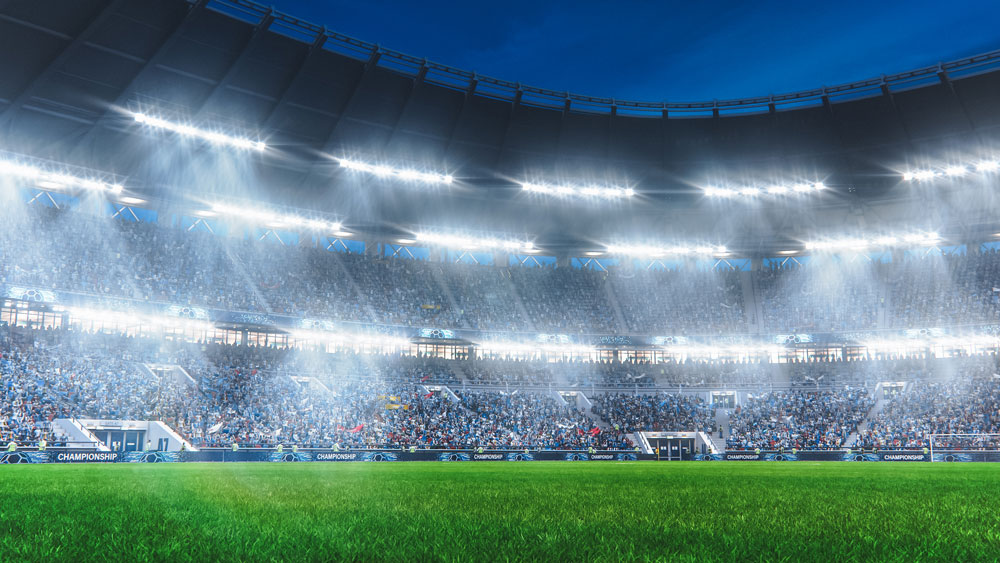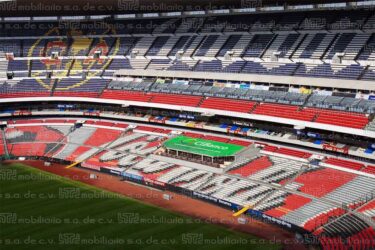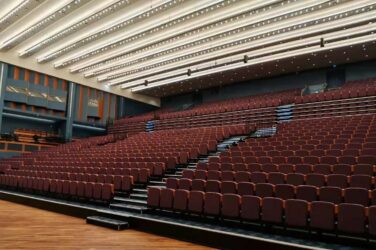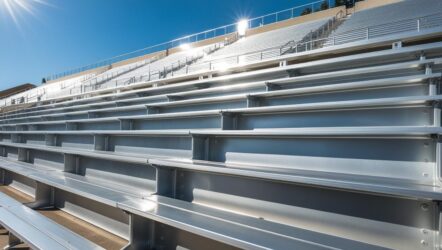How Much Does Stadium Lighting Cost?
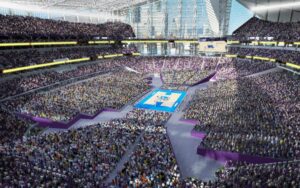 When planning the construction of stadium grandstands or bleachers it is essential to grasp all associated expenses. Beyond the erection of grandstands, the installation and upkeep of lighting systems represent pivotal considerations. The costs related to stadium lighting and the electricity required to illuminate the field during games consistently rank among the highest ongoing expenses for such facilities. Although Preferred Seating does not oversee the installation of lighting, we aim to perform some financial calculations to assist you in making informed choices while developing a sports venue.
When planning the construction of stadium grandstands or bleachers it is essential to grasp all associated expenses. Beyond the erection of grandstands, the installation and upkeep of lighting systems represent pivotal considerations. The costs related to stadium lighting and the electricity required to illuminate the field during games consistently rank among the highest ongoing expenses for such facilities. Although Preferred Seating does not oversee the installation of lighting, we aim to perform some financial calculations to assist you in making informed choices while developing a sports venue.
Several elements influence the overall expense of lighting a facility, including the daily energy usage of floodlights and the current rates for that energy. For instance, a standard high school football stadium typically requires between 300 to 400 lux for adequate illumination. If you opt for metal halide lamps, approximately 70,000 watts will be necessary to achieve 300 to 400 lux, whereas using LED floodlights would only require about 35,000 watts.
Maintenance and Installation Costs
In 2024, the comparison of Metal Halide (MH) lamps and Light Emitting Diode (LED) lamps continues to be a significant topic for both industries and individuals assessing lighting options. A vital component of this assessment is comprehending the maintenance and installation expenses linked to each type of technology. This article explores these cost considerations, offering a thorough analysis to facilitate well-informed decision-making.
Introduction to Metal Halide and LED Lamps
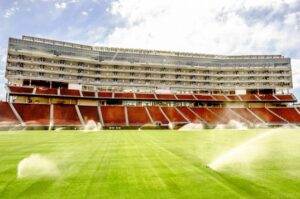 Metal Halide Lamps: Introduced in the 1960s, MH lamps are a type of high-intensity discharge (HID) lighting. They produce light by passing an electric arc through a mixture of gases, including vaporized mercury and metal halides. Known for their high luminous efficacy and bright white light, MH lamps have been widely used in stadiums, warehouses, and street lighting.Wikipedia
Metal Halide Lamps: Introduced in the 1960s, MH lamps are a type of high-intensity discharge (HID) lighting. They produce light by passing an electric arc through a mixture of gases, including vaporized mercury and metal halides. Known for their high luminous efficacy and bright white light, MH lamps have been widely used in stadiums, warehouses, and street lighting.Wikipedia
LED Lamps: LED technology has evolved significantly since its inception in the early 20th century. LEDs generate light through electroluminescence, where electrical current passes through a semiconductor material. Celebrated for their energy efficiency and longevity, LEDs have become prevalent in residential, commercial, and industrial settings.
Stadiums: Cost Analysis for Lighting around Grandstands and Bleachers
Initial Investment:
- Metal Halide Lamps: Generally, MH lamps have a lower upfront cost compared to LEDs. The fixtures and bulbs are less expensive, making them an attractive option for projects with tight initial budgets. However, this advantage is often offset by higher operational and maintenance expenses over time.
- LED Lamps for Grandstands: LEDs typically involve a higher initial expenditure due to advanced technology and manufacturing costs. Despite this, the long-term savings in energy and maintenance often justify the initial investment.
Operational Costs:
- Energy Consumption: LEDs consume significantly less power than MH lamps. For instance, a 100-watt LED fixture can replace a 400-watt MH lamp, leading to substantial energy savings. Over a year, operating a 400-watt MH fixture can cost approximately $239.14, whereas a 100-watt LED fixture may cost around $52.56, assuming an electricity rate of $0.12 per kilowatt-hour. Led Lighting Supply
- Maintenance Expenses: National LED states that MH lamps have a lifespan ranging from 6,000 to 15,000 hours, necessitating frequent replacements and associated labor costs. LEDs, with lifespans between 50,000 to 100,000 hours, reduce the frequency and cost of maintenance interventions. National LED+2Smart Energy Insights | FES View+2RC Lighting+2.
- On average in the United States, the cost of a kilowatt per hour is 16 cents in year 2024.
Energy Efficiency – Lighting for Stadium, Grandstands and Bleachers
- Metal Halide Lamps: MH lamps are more efficient than incandescent bulbs but lag behind LEDs. They emit light omnidirectionally, requiring reflectors to direct illumination, which can lead to energy losses.Smart Energy Insights | FES View+1LED Lighting Co.+1
- LED Lamps: LEDs are highly energy-efficient, converting a greater portion of electricity into visible light. Their directional lighting capability minimizes wasted light and enhances efficiency.
Lifespan and Durability
- Metal Halide Lamps: RC Lighting says that with an average lifespan of 6,000 to 15,000 hours, MH lamps degrade over time, experiencing significant lumen depreciation. They also require a warm-up period to reach full brightness and can be sensitive to frequent switching.RC Lighting+3Wikipedia+3National LED+3
- LED Lamps: LEDs offer extended lifespans of up to 100,000 hours and maintain consistent light output throughout their operational life. They achieve full brightness instantly and are resilient to frequent on-off cycles.
Light Quality for Grandstands
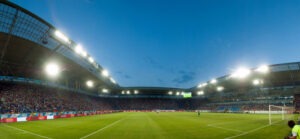 Color Rendering Index (CRI): Both MH and LED lamps can have high CRI values, indicating good color accuracy. However, LEDs maintain consistent color quality over time, whereas MH lamps may experience color shifts as they age.
Color Rendering Index (CRI): Both MH and LED lamps can have high CRI values, indicating good color accuracy. However, LEDs maintain consistent color quality over time, whereas MH lamps may experience color shifts as they age.- Color Temperature: Smart Energy Insights notes that MH lamps typically emit a bright white light with color temperatures around 4000K to 5000K. LEDs offer a broader range of color temperatures, allowing customization to suit specific environments and preferences.Smart Energy Insights | FES View
Environmental Impact
- Metal Halide Lamps: Contain hazardous materials like mercury, posing environmental and health risks if not disposed of properly. Their higher energy consumption also contributes to a larger carbon footprint.Wikipedia
- LED Lamps: Free from toxic elements and consuming less energy, LEDs have a reduced environmental impact. Their longevity further decreases waste associated with frequent replacements.
Practical Applications
- Metal Halide Lamps: LED Lighting Co says that historically favored for large-area illumination such as sports arenas, industrial facilities, and street lighting due to their intense brightness.LED Lighting Co.
- LED Lamps for Stadium Grandstands and Bleachers: Versatile across various applications, including residential, commercial, and specialized settings like grow lights. Their adaptability, efficiency, and declining costs have led to widespread adoption.
Advantages and Disadvantages Summary
| Aspect | Metal Halide Lamps | LED Lamps |
| Initial Cost | Lower upfront investment. | Higher initial expenditure. |
| Energy Efficiency | Less efficient; higher energy consumption. | Superior efficiency; lower energy usage. |
| Lifespan | Shorter operational life; frequent replacements needed. | Extended lifespan; minimal maintenance required. |
| Light Quality | High CRI; potential color shifts over time. | High CRI; consistent color quality. |
| Environmental Impact | Contains hazardous materials; higher carbon footprint. | Eco-friendly; reduced environmental impact. |
| Warm-Up Time | Requires warm-up period to reach full brightness. | Instantaneous illumination. |
| Maintenance Costs | Higher due to frequent bulb and ballast replacements. | Lower owing to durability and longevity. |
| Directional Lighting | Omnidirectional; requires reflectors, leading to energy loss. | Directional; efficient light distribution without the need for additional components. |
When evaluating Metal Halide and LED lamps in 2024 for grandstands, LEDs emerge as the superior choice for most applications, despite their higher initial cost. The long-term benefits, including energy savings, reduced maintenance, and environmental advantages, position LEDs as a prudent investment. However, specific project requirements and budget constraints may still warrant the use of MH lamps in certain scenarios. A thorough assessment of both immediate needs and long-term goals is essential in selecting the most appropriate lighting solution.
Maintenance Costs – Lighting for Stadiums, Grandstands and Bleachers
Metal Halide Lamps:
MH lamps have been a staple in various applications due to their high-intensity illumination. However, they come with notable maintenance requirements:
- Frequent Replacements: According to LC Lighting The average lifespan of an MH lamp ranges from 6,000 to 15,000 hours. This relatively short operational life necessitates regular bulb replacements, leading to increased labor and material expenses. In environments where lighting is used extensively, these costs can accumulate rapidly. RC Lighting
- Lumen Depreciation: MH lamps experience significant lumen depreciation, often losing up to 50% of their initial brightness within the first 10,000 hours of operation. This decline in light output may require proactive replacements to maintain adequate illumination levels, further adding to maintenance efforts and costs. naturaled.com
- Ballast Failures: MH systems rely on ballasts to regulate the electrical current. These components can fail and typically require replacement every few years, introducing additional maintenance tasks and expenses.
LED Lamps for Grandstands and Bleachers:
LED technology offers several maintenance advantages over traditional MH lamps:
- Extended Lifespan: LED fixtures boast lifespans ranging from 50,000 to over 100,000 hours, significantly reducing the frequency of replacements. This longevity translates to lower labor costs and fewer disruptions. RC Lighting
- Minimal Lumen Depreciation: LEDs maintain consistent brightness throughout their operational life, with minimal lumen depreciation. This stability ensures sustained illumination quality without the need for premature replacements. naturaled.com
- Reduced Component Failures: LED systems typically do not require ballasts, eliminating a common point of failure present in MH systems. This reduction in components decreases the likelihood of maintenance issues.
Installation Costs
Metal Halide Lamps:
The initial installation of MH lighting systems involves specific considerations:
- Lower Upfront Fixture Costs: MH fixtures generally have a lower purchase price compared to LED counterparts, making them initially more budget-friendly.
- Additional Components: Installation requires not only the lamp but also ballasts and sometimes reflectors to direct light appropriately. These additional components can increase installation complexity and time.
- Energy Consumption: As LED Lighting Supply explains, MH lamps consume more energy, leading to higher operational costs over time. For example, a 400-watt MH fixture can cost approximately $239.14 annually in energy expenses when operated for 12 hours daily at an electricity rate of $0.12 per kilowatt-hour. Led Lighting Supply
LED Lamps:
LED installations, while potentially more expensive upfront, offer long-term benefits:
- Higher Initial Investment: The advanced technology and longer lifespan of LED fixtures contribute to a higher purchase price. However, this cost is often offset by subsequent savings.
- Simplified Installation: LED systems are typically more straightforward to install, as they do not require ballasts and can be integrated into existing infrastructures with relative ease. This simplicity can reduce labor costs during installation.
- Energy Efficiency: As RC Lighting notes, LEDs are markedly more energy-efficient. A comparable 100-watt LED fixture may cost around $52.56 annually under the same usage conditions, offering substantial savings on energy bills. RC Lighting+5Smart Energy Insights | FES View+5Led Lighting Supply+5Led Lighting Supply
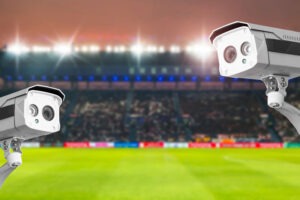 When evaluating maintenance and installation costs between Metal Halide and LED lamps in 2024, LEDs present compelling advantages. Despite a higher initial investment, the extended lifespan, reduced maintenance requirements, and superior energy efficiency of LED systems result in significant cost savings over time. Conversely, while MH lamps may appeal due to their lower upfront costs, the ongoing expenses associated with frequent maintenance and higher energy consumption can lead to greater overall expenditures. Decision-makers should consider both immediate budgets and long-term financial implications when selecting the appropriate lighting technology for their needs. Please contact Preferred Seating for more information
When evaluating maintenance and installation costs between Metal Halide and LED lamps in 2024, LEDs present compelling advantages. Despite a higher initial investment, the extended lifespan, reduced maintenance requirements, and superior energy efficiency of LED systems result in significant cost savings over time. Conversely, while MH lamps may appeal due to their lower upfront costs, the ongoing expenses associated with frequent maintenance and higher energy consumption can lead to greater overall expenditures. Decision-makers should consider both immediate budgets and long-term financial implications when selecting the appropriate lighting technology for their needs. Please contact Preferred Seating for more information



